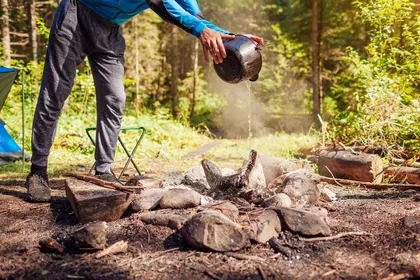Campfire Safety Guide
Plan Ahead
Step 01 What You’ll Need
-
Make sure to have the right items on hand
Tools: Water, bucket or large container, shovel, and a metal fire ring
Wood: Tinder, kindling, and logs
- Tinder: Small twigs and dry leaves, grass, and needles
- Kindling: Sticks smaller than 1″ around
- Logs: Larger pieces of wood
Cellphone: Call 911 immediately in case of emergency — if your fire jumps from the pit to surrounding vegetation or if embers fly outside of the fire.
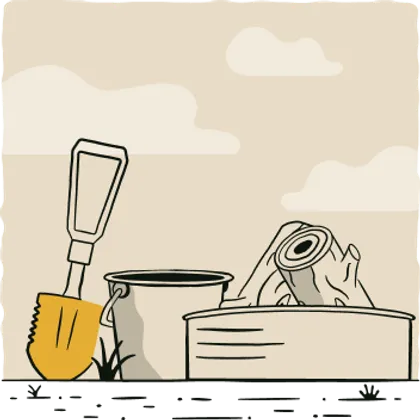
Step 02 Know Before You Go
-
Call or check online for fire restrictions
Search for ‘fire restrictions’ followed by your location, local parks and recreation organization, or public lands agency.
Don’t build a campfire or dig a fire pit if the campground, area, event rules, or local laws prohibit them.
-
Check the weather
Don’t build a campfire in hazardous, dry, or windy conditions.
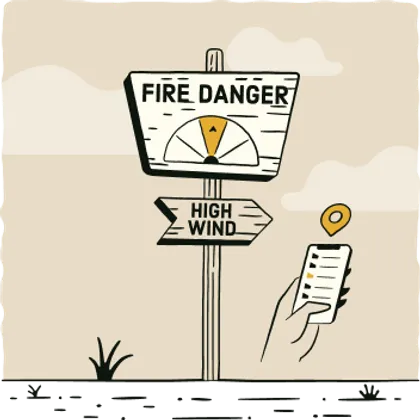
Stay Safe
Step 03 Pick Your Best Spot
-
Find an open and level area
Select a flat area with an open overhead.
-
Stay away from windy areas
Find an area with no gusty winds and avoid open fields.
-
Keep away from flammable objects
Stay at least 15 feet from tents, vegetation, and low-hanging branches. Ensure you have vertical clearance at least 3 times the height of the flames.
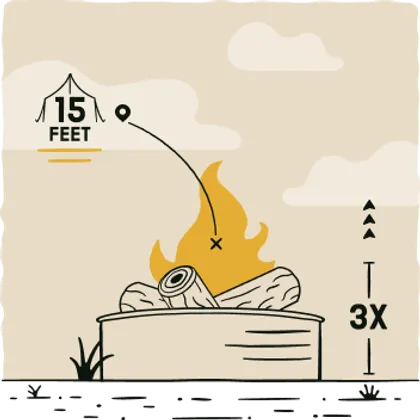
Step 04 Use an Existing Fire Pit or Prepare Your Own Pit
-
Clear the area
Whether using an existing fire pit or making your own, ensure you have at least a 10-foot diameter around the site.
-
Use an existing fire pit
If available, use an existing fire pit that has a metal ring or rock circle.
-
Dig your pit
If an existing fire pit isn't available, make your own fire pit by digging down about 1 foot deep.
-
Add a barrier
Place a metal fire ring around your fire to add a barrier. If you don’t have a metal fire ring, circle your pit with rocks.
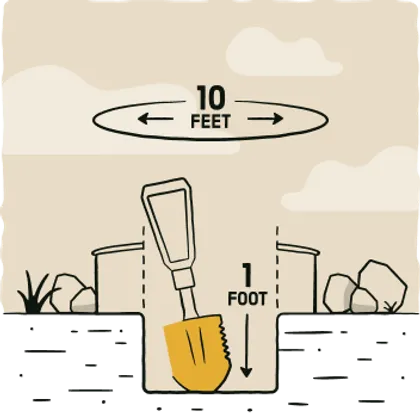
Step 05 Build Your Campfire
-
Gather your wood
Pick up small, dry sticks or logs not covered by leaves from the ground — the leaves retain moisture and are often important to insects and fungi.
Never cut whole trees or branches — dead or alive — you’ll damage the forest. The live materials won’t burn, and dead, standing trees shelter birds and other wildlife.
-
Pile tinder in the center
Best methods for cooking:
- Teepee: Lay the kindling over the tinder like you’re building a tent.
- Lean-to: Drive a long piece of kindling into the ground at an angle over the tinder. Lean smaller pieces of kindling against the longer piece.
Best methods for long-lasting campfires:
- Cross: Criss cross the kindling over the tinder.
- Log Cabin: Surround your pile of tinder with kindling, stacking pieces at right angles. Top the “cabin” with the smallest kindling.
-
Ignite the tinder
You can use a match or lighter to start the fire but never use flammable liquids.
-
Slowly build the fire
Blow lightly at the base of the fire then add kindling and fuel.
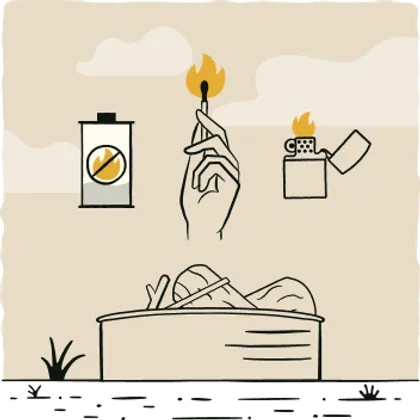
Step 06 Maintain Your Campfire
-
Keep the fire going
Add larger pieces of dry wood, but never burn trash or dangerous things — aerosols, pressurized containers, batteries, glass, or aluminum.
-
Keep your wit around your fire pit
Always be vigilant around your campfire — don’t play around and keep an eye on children and pets.
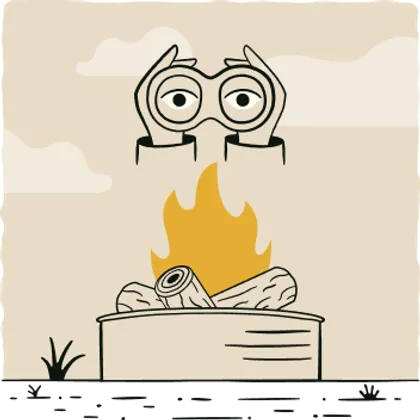
Extinguish Your Campfire
Step 07 Drown, Stir, Drown, Feel
-
Drown
Pour lots of water on the fire until the hissing sound stops, drowning all the embers — don’t extinguish a fire with just dirt or sand.
-
Stir
Use your shovel to stir the water into the embers, dirt, and sand, and mix well. Scrape any sticks and logs until no embers are exposed or smoldering, not just the red ones.
-
Drown
Continue adding water, dirt, and sand until all material is cool.
-
Feel
Hover the back of your hand over the ashes to feel that the embers are cool — don’t leave without making sure your fire is entirely out.
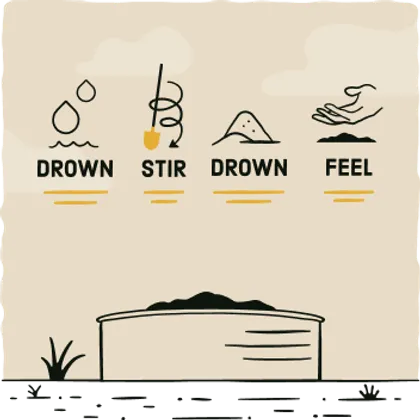
Step 08 Heading Out
-
Pack it in, Pack it out
It’s your responsibility to leave the area as good (or better) than you found it.
